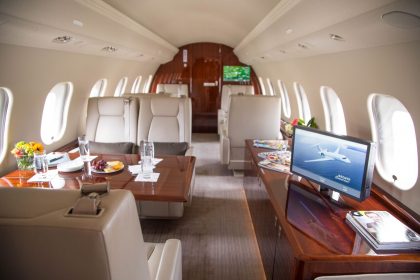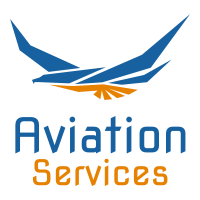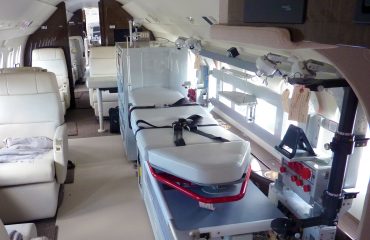
Never in the history of private aviation have there been so many first-timers in such a short period. With COVID-19 risk 30 times lower when flying privately, much of the industry’s rebound is based on newcomers. If flying on a private charter is new to you, here are some of the differences compared to airlines.
1. You choose the departure time When booking your charter flight, be it on a one-off charter or with a jet card, you specify the time you want to leave. It’s on your schedule. Most domestic private flights are during the daytime, and unlike airlines, where overnight flights are cheaper, it’s the reverse when flying privately. While you can specify when you want to depart, if you have flexibility, ask your broker if you can save money by leaving at a different time or day. Prices can vary by thousands of dollars.
2. You choose the airports Private jets in the U.S. have access to over 5,000 airports compared to under 500 used by the airlines. Tell your provider where you are leaving from and where you need to go when you land instead of the airports you would use if flying with an airline. Your broker may be able to suggest more convenient airports that will shave hours of your total travel time.
3. There are no boarding passes You don’t get a boarding pass, you get a tail number. If you are booking one-off charters, you may get your tail number when you book. In fact, you are often reserving a specific aircraft. With jet cards, typically your provider will email you at least 24 hours prior to departure. When you get to the private jet terminal, called an FBO, you provide the tail number to the reception desk and they will connect you with your pilots. Recommended For You * France, Germany, Finland-10 European Countries Lift EU Travel Ban For Couples * Got $100K? $500K? $3M? Ultra-Rich Americans Are Spending Big On Second Passports * Update On New York’s Extensive Travel Restrictions MORE FROM FORBESPrivate Jet Providers NetJets, Directional Aviation Plan Big GrowthBy Doug Gollan Do keep in mind, your aircraft may need to pick up other passengers after dropping you off, or your crew may have been flying already, and need to complete your trip within their duty limits. In other words, if you arrive early, you might be able to leave early, but don’t be late. If you are running late, call the FBO and your broker or operator if you booked the flight directly. You’ll find they will do their best to accommodate you.
4. There can be up to six different private jet terminals at a single airport While FBOs provide a lounge area to wait and meet your crew, they are essentially gas stations for private jets. If you think about the intersection of busy highways, chances are there is a gas station on each corner. Likewise, high volume airports will have anywhere from three to six FBOs. In some cases, one company operates multiple terminals. At Teterboro Airport, the busiest private jet airport in the U.S., Signature Flight Support has three separate locations, each over a mile apart.
5. Freshen up in the FBO before boarding your flight So you think the toilets on airliners are a tight fit. Most first-timers charter the most cost-effective aircraft for their flight, so it’s often a light or midsize jet, or even a turboprop. While most private jets have at least an emergency potty, and typically a lavatory with a fixed-door, on small private jets they can be quite cramped. In other words, show up a few minutes early and freshen up at the FBO before boarding.
6. If your provider cancels, you have to pay the difference for replacement flights When you book private jet flights on a one-off basis, referred to as on-demand or ad hoc charter, if the operator cancels, be it a mechanical issue or a sick pilot, you have to pay the difference if replacements flights cost more. It’s what brokers refer to as “the painful conversation.” MORE FROM FORBESHow To Fly By Private Jet In A World With COVID-19By Doug Gollan Your provider will seek to find the best options, however, if you want to go, you have to pay the difference, which can mean thousands of dollars that need to be wired on short notice if a credit card can’t be used. Good brokers will guide you to dependable operators, not just the lowest price. One reason frequent private fliers move to jet cards is when there are non-weather related cancelations, many guarantee getting you a like or better aircraft at their expense. Some will even compensate you with free flight hours for the delay.
7. There are no assigned seats Once you get onboard, it’s like Southwest Airlines, in other words, free seating. Typically the person who is paying will take first dibs or make suggestions.
8. You probably won’t have a flight attendant Unless you book a large cabin private jet, it’s unlikely you will get a flight attendant. If you book a smaller aircraft, frankly there isn’t that much room. One of the pilots will do the safety demonstration.
9. Not all private jets offer WiFi While WiFi is fairly standard on domestic airline flights, it varies on private jets. If you need to be connected, you should request it when you book, or you can buy jet cards that include WiFi in the price. If it’s not specifically included, be careful, as you may find yourself getting billed hundreds of dollars later as a post-flight charge. Yes, it was in your contract. Make sure to read the fine print.
10. Catering is usually an extra charge Generally you will find packaged snacks, sodas, minis of standard spirits, wine splits, coffee, and ice. Anything else needs to be ordered in advance, and generally is charged on an a la carte basis with fancy restaurants prices for sandwiches and fruit platters. Don’t feel you have to order catering. Many regulars don’t.
11. You’re responsible for damage to the airplane If your kid draws on the sidewall or you spill that Pinot Noir on the carpet and it can’t easily be cleaned, expect a bill. Turbulence is not an excuse. You may want to think twice before you open the red wine. Many private jets on the charter market are owned by individuals or companies who rent them out when they aren’t using them. Treat the cabin as if you were visiting your bosses home.
12. You can tip the crew When you show up at the private jet terminal, line staff from the FBO will help with bags, and one of your pilots will then load them in the cabin and hold. Your flight crew will likely also help you find the drinks and snacks, and get you set-up with welcome aboard drinks. Tips are appreciated although policies vary by company. You can find more here.
13. You won’t find a taxi stand when you land Unlike airports where when you come out of the terminal, there is a taxi stand, make sure to arrange your transportation before you depart. At small airports, you may find that Ubers or local taxi services aren’t always available. At big airports, it may also take ride share services awhile to find you. FBOs are often hidden between hangars or other buildings, not easy to find, in places drivers aren’t familiar with. Your broker or operator can arrange ground transportation, and if your pilots don’t see a note about it, they will often ask when they greet you you.
Other differences
There are certainly more differences. You don’t go through the typical security screening, however, everyone flying with you needs to be on the manifest of a charter flight. If there are changes, make sure to update your provider, typically at least 24 hours prior to departure as names have to be run against TSA’s No Fly list. Like the airlines, everyone will need a government ID. Your flight crew is responsible for checking, and you won’t be allowed to fly without one.
Read full article on Forbes.com


